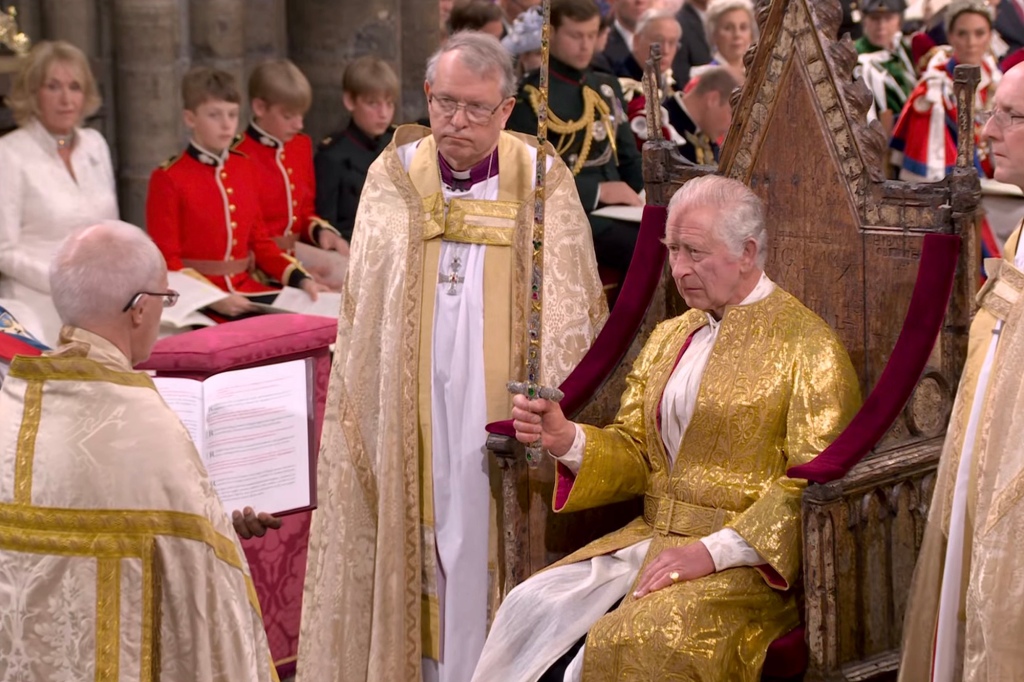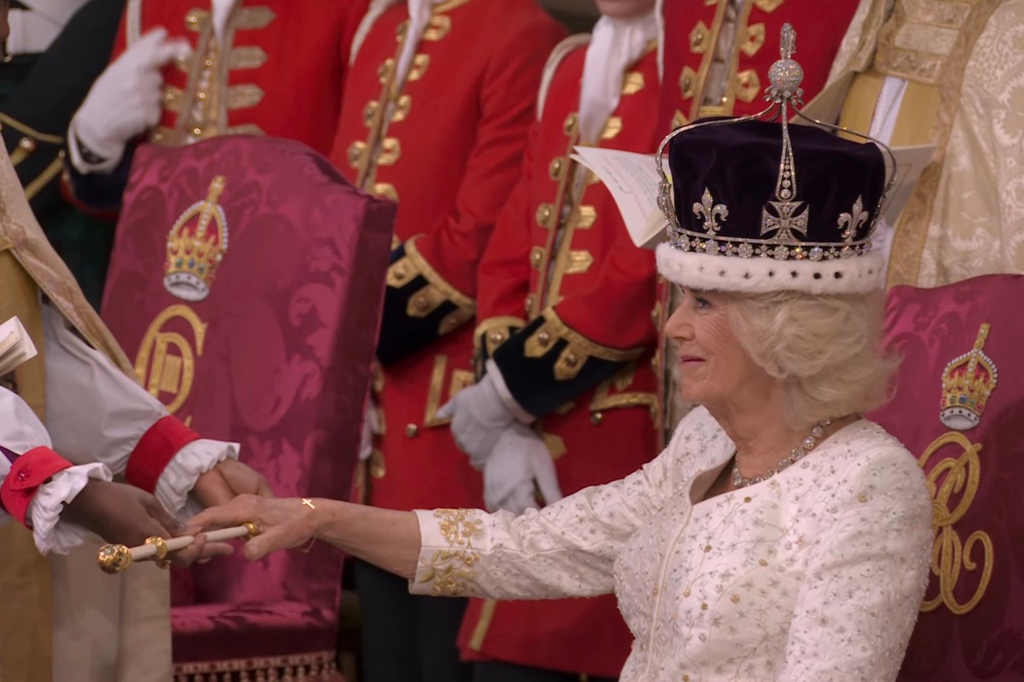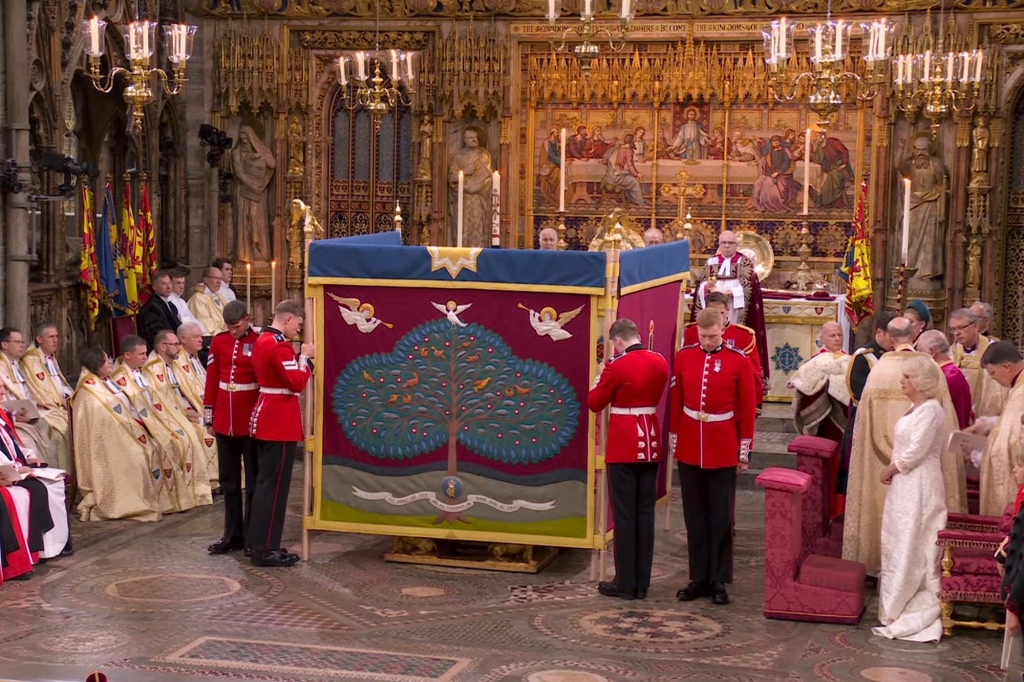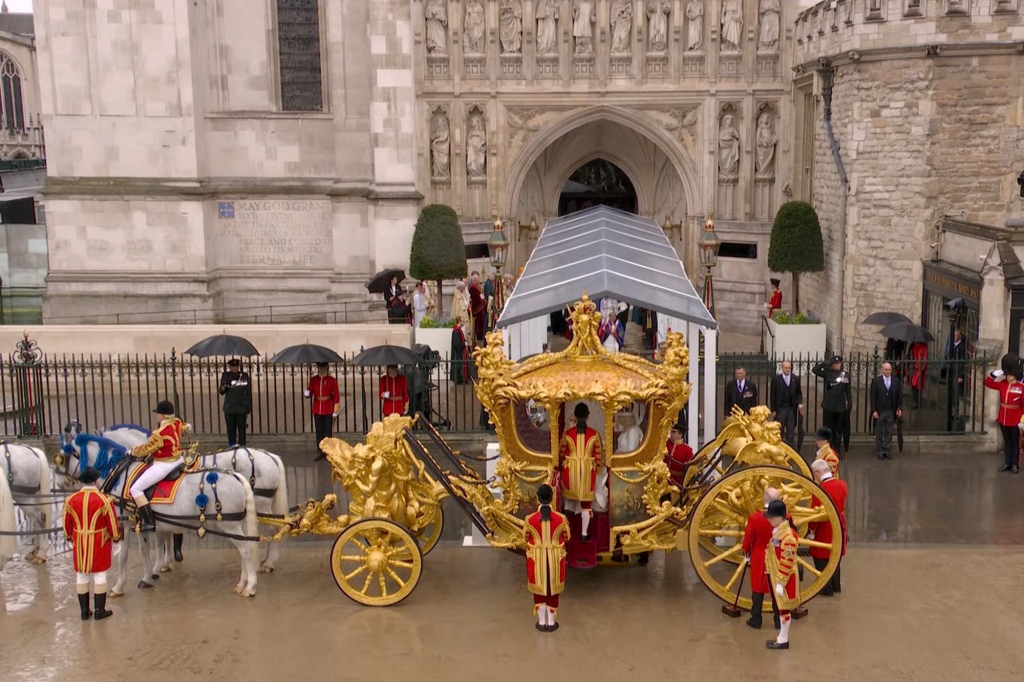All about King Charles’ coronation medieval crown and throne
King Charles III was crowned as monarch in full historic style Saturday at Westminster Abbey during his much anticipated coronation.
A multitude of royal regalia, including his crown, wooden crowning chair and more were used to formally coronate him.
As the 74-year-old was officially inducted as sovereign, was given the sacred objects as he sat on the chair, and was robed with his blessed cloaks.
In the moment that he was officially crowned, he was presented with St. Edward’s historic headpiece and it was placed onto of his head.
The chair was commissioned by Edward I in 1300, where he used it to secure the Stone of Scone — also known as the Stone of Destiny.
The chair has been used at many coronations since the 14th century and it is the seat that the incoming monarch sits on as they are given the regalia.
King Edward I of England took the monolith from the Scottish people in 1296 and the chair was painted by Master Walter and detailed with patterns of birds, plants and animals.
Either Edward the Confessor or Edward I, is also painted on the chair, showing his feet stepping on a lion.
The Stone of Destiny was placed underneath the chair for Charles’ enthronement.
The block left Scotland’s Edinburgh Castle for the first time in over 25 years on April 28 and made its way to London. It was first returned to the country in 1996 by former Prime Minister John Major.
The stone is an ancient emblem of Scotland’s monarchy and has been used for centuries to enthrone its sovereigns.
As for St. Edward’s crown, Charles donned the magnificent headpiece while sitting on the ancient wooden recliner by the Archbishop of Canterbury, Justin Welby.
St. Edward’s crown was last used for Queen Elizabeth’s coronation in 1953 and was made for Charles II in 1661, as a replacement for a tiara that had been destroyed in 1649.
The gold and purple velvet headdress weighs a staggering five pounds and is filled with gems including sapphires, rubies, garnets, amethysts, topazes and tourmalines, along fleur-de-lis and cross accents.
A cross and a sphere — which symbolizes the world — topped off this glittering tiara.
Aside from the gold coronet, other objects that were present included the Imperial State Crown, Queen Mary’s crown, the coronation spoon, the ampulla, the sovereign’s orb and two scepters, respectively, featuring a dove and a cross.



The Imperial State tiara was worn by Charles when he leaves Westminster Abbey once the ceremony has concluded.
Queen Mary’s crown was placed on his wife, Queen Camilla’s head when she was coronated as soverign.
The coronation spoon was used to anoint the new monarch with holy oil, while the ampulla held the consecrated liquid. However, the world was unable to see this holy and magnificent moment, as Charles was anointed behind a glorious and intricately wooden screen.
As for the orb — which was placed Charles’ right hand — it symbolizes the British monarch’s power, while the sovereign’s scepter with a cross represents the king’s temporal power and has been used at every crowning since 1661.
The scepter with the dove is a symbol of his spiritual role as a supreme ruler, as well as being metaphorical of the Holy Spirit.

Read the full article Here


